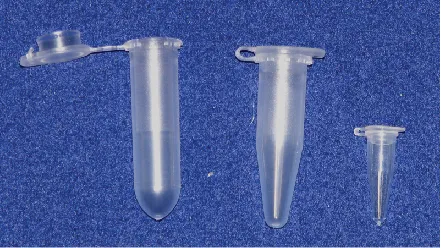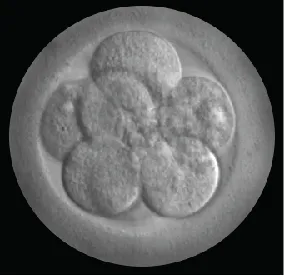CRISPR (clustered regularly interspaced short palendromic repeats) is a term that refers to a bacterial defense system against viral or other DNA/RNA invaders. It has been termed the "bacterial immune system". This immune system involves a variety of proteins and also DNA and RNA components to achieve this function. When you hear about CRISPR in the news what you are hearing about is work being done on one protein from that complex. This protein is called CRISPR associated protein 9 or Cas9

Cas9
Cas9 is what is known as a nuclease, what that means is it has the ability to chop up DNA. Cas9 is a unique nuclease as it uses a different piece of nucleic acid as a guide (an RNA guide).
What I mean by that is, there is a short piece of RNA that interacts first with the Cas9 nuclease. Now you are likely aware that nucleic acids pair up with one another based upon their sequences A pairs with T and C with G, So if I had a guide RNA with a sequence of CATTGG then it would be looking for a complementary sequence of GTAACC to bind to.
This is the property that allows the Cas9 nuclease to target with precision! The guide has a specific sequence that it will bind to, and only once the guide has bound does the Cas9 nuclease cut the DNA.
So Think About This
Say there was a genetic disease that resulted from a small change in the sequence from a gene, wouldn't it be nice if we could target that specific location, cut that bad sequence and repair it to the correct one?
THIS is what researchers have been trying to do with the Cas9 protein. It has that unique ability that if given a guide with an appropriate sequence (say for a region in a gene with a messed up sequence!) that it will go and cut it specifically. Then allowing for that spot to be repaired.
This sort of work has been ongoing for a while now and it works beautifully in the test tube, but as we ALL know things that work in the test tube, do not always carry over to the biological system (the cell is just much more complicated then the isolated test tube reaction).

However Finally Successful Gene Editing Has Been Achieved In HUMAN Embryos
There have been a variety of previous reports showing that gene editing was possible in cells, these were all steps in the right direction. However a recent report in the journal Molecular Genetics and Genomics describes researchers work getting this protein to cut a targeted sequence in human embryos.

In this article the researchers directly injected (with a syringe) the Cas9 protein along with a guide RNA specifically designed to target mutations in one of two genes. These genes were called HBB and G6PD. When they did these experiments to correct the errors in the genes, they found that one embryo they tested on was 100% corrected, however the other was 50% corrected, half of its cells had the corrected genes while the other half were even WORSE off, as one gene had four DNA bases deleted from around where the mutation was previously located (so now the sequence was REALLY changed).
They sequenced the whole genomes of the emybryos and did not observe any other off target cutting or changes by the Cas9 so the technique was specific. Still, the fact that the technique does not result in a 100% success rate indicates that the technology is not nearly ready for prime time implementation to try to correct genetic diseases as of yet.
So What's Next?
More work, and a lot of it. You may read people interpreting this work as evidence for this technology being nearly ready, but the words of the researchers in their own discussion are that it is not! Not yet at least.
However, the use of CRISPR/Cas9-mediated gene editing in reproductive clinics is not a current option due to both ethical and technical issues (safety, mosaicism, and other factors).
The mosaicism they mention is the formation of 50% edited, 50% broken embryos that I discussed with you above.
What Do They Think It Is Ready For?
Being used as a way to knock genes out of cells easily in order to gain better understanding of what they do for a cell. We just don't have many good/effective ways to do this currently. Additionally, in these sorts of experiments it doesn't matter if the success rate isnt 100%, you aren't dealing with a potential human life.
There are so very many proteins in the cell that at this time we just have no clue what are doing, we can lat least use this technology to increase our understanding, and even from that sort of basic research important discoveries may come. If the CRISPR editing technique can make this sort of basic research easier, a whole host of discoveries are just waiting to be made!
TL;DR
Researchers successfully used CRISPR to edit human embryos. This editing was successful in SOME cases, but not all which is a huge technical limitation to its implementation as a technology for gene repair in reproductive clinics! More work needs to be done to better understand this technique, and improve the success rate before it is truly ready for prime time. This work is another step in the right direction.
Sources
- https://en.wikipedia.org/wiki/CRISPR
- https://en.wikipedia.org/wiki/Cas9
- https://en.wikipedia.org/wiki/Nuclease
- https://link.springer.com/article/10.1007%2Fs00438-017-1299-z
All Non Cited Images Are From Pixabay.com And Are Available Under Creative Commons Licenses
Any Gifs Are From Giphy.com and Are Also Available for Use Under Creative Commons Licences
If you like this work, please consider giving me a follow: @justtryme90. I am here to help spread scientific knowledge and break down primary publications in such a way so as to cut through the jargon and provide you the main conclusions in short and easy to read posts.
Thank you for your continued support of my work! I appreciate all those who follow me (and those who don't too, but I appreciate you much much less ;) ).